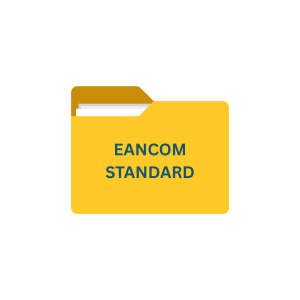Introduction
What is Omnichannel Retail?
Omnichannel retailing is a strategic approach that aims to provide customers with a seamless and cohesive shopping experience, regardless of the channel they choose to engage with a brand. It ensures that customers can interact with a brand through various touchpoints, such as physical stores, websites, mobile apps, social media, and more, without disruption. An omnichannel strategy aims to provide a cohesive and personalized experience, regardless of the channel or device used online and offline.
The key foundational elements of an omnichannel strategy are,
- Multiple channels for engagement
- Consistency and coordination across channels
- Data and infrastructure readiness
Key Takeaways
- Product Information Management (PIM) centralizes and manages product data, ensuring consistency across all sales channels, both online and offline. This helps businesses provide a seamless and consistent customer experience, which is key in today’s omnichannel environment.
- PIM simplifies the process of managing large amounts of product data, reducing manual effort and errors by streamlining updates across platforms. This ensures that customers receive accurate, up-to-date product information wherever they shop.
- With PIM, businesses can enhance customer trust and engagement by providing detailed, reliable product content. This ultimately leads to higher sales and improved customer satisfaction.
- Commport’s PIM solution ensure consistent, accurate product data distribution, helping businesses improve the overall shopping experience and drive better performance across all channels.
1. Multiple channels for engagement
Providing consistent and efficient customer support across all touchpoints.
- Websites, ensuring an online presence where customers can browse and shop for products.
- Mobile apps, offering convenience for on-the-go shopping and personalized notifications.
- Social media platforms enable brands to engage with customers, showcase products, and direct traffic to online or physical stores.
- Brick-and-mortar stores provide a tangible shopping experience where customers can physically interact with products.
2. Consistency and coordination across channels
- Maintaining a unified brand message and visual identity across all channels.
- Ensuring that product information, pricing, promotions, and customer service are uniform across all platforms.
- Utilizing universal data to maintain consistency is crucial for building trust and loyalty with customers.
3. Data and Infrastructure readiness
Ensuring that all systems, including CRM, ERP, and PIM, are interconnected to provide a seamless experience. Prepare the backend systems to deliver a holistic view of the customer relationship, regardless of the channel. Addressing the challenge of maintaining a single consistent source of data that is accessible to customers through any means of contact with retailers.
The journey to achieving a successful omnichannel strategy involves several steps:
- Breaking Down Data Silos: Retailers must integrate their data across all channels to ensure information flow is unimpeded and consistent.
- Leveraging Technology: Utilizing platforms and technologies, such as Intel technologies, to collect, store, share, and analyze data from every channel. This technological foundation is essential for deriving business insights and delivering personalized buying experiences.
- Maximizing Data Connections: Creating a unified ecosystem that shares data across customer-facing technologies, operational systems, and supporting technology infrastructure. This integration is key to offering personalized sales recommendations and enhancing the customer experience at the moment of transaction.
By focusing on these aspects, businesses can optimize customer engagement and experiences across channels, ensuring digital and in-store operations integrate seamlessly. The future of omnichannel retail lies in designing unique, thoughtful buying experiences that are personalized to customers’ wants and needs, using data analytics to inform targeted campaigns and predict future trends.
The Synergy Between PIM and Omnichannel Retail
The integration of PIM with an omnichannel strategy can significantly enhance the customer experience by ensuring that accurate and consistent product information is available across all touchpoints. Here’s how PIM contributes to a successful omnichannel experience:
- Consistency Across Channels: PIM ensures that product information is consistent across all channels, reducing the risk of discrepancies that can confuse or frustrate customers.
- Improved Data Quality: With centralized data management, businesses can maintain high-quality product information, which is crucial for making informed purchasing decisions.
- Faster Time-to-Market: PIM systems streamline the process of updating and distributing product information, allowing businesses to quickly launch new products and promotions across all channels.
- Streamlined Inventory Management: By maintaining a unified view of inventory across all channels, PIM systems help retailers manage stock levels more effectively, ensuring that product availability information is always accurate. This capability is essential for meeting customer expectations and reducing the risk of stockouts or overstock situations.
- Easy Retrieval and Revisions: Businesses can quickly update product information, ensuring that marketing efforts are consistent across multiple channels.
- Enhanced Customer Engagement: Rich and detailed product information, supported by PIM, can engage customers more effectively and increase their confidence in making purchases.
- Personalization: By integrating PIM with customer data, businesses can deliver personalized product recommendations and experiences, enhancing customer satisfaction and loyalty.
Research Statistics on PIM and Omnichannel Integration



- Product Information Management Market Size to Reach US$ 24.5 Billion by 2030, Driven by Increasing Demand for Enhanced Customer Experience and Operational Efficiency
– Says RationalStat
2. “Brands with strong omnichannel customer engagement retain an average of 89% of their customers, compared to 33% customer retention for companies with weak omnichannel strategies.”
3. Improved Customer Experience: A report by Forrester found that 68% of customers are more likely to return to a brand that offers a seamless omnichannel experience.
4. Reduced Time-to-Market: Gartner reports that organizations using PIM solutions can reduce their time-to-market by up to 30%.
5. Enhanced Data Accuracy: Ventana Research highlights that companies using PIM achieve a 60% improvement in data accuracy.
How Does PIM & Omnichannel Retail Work Together?
Integrating Product Information Management (PIM) with an omnichannel strategy is a dynamic approach that ensures a seamless and consistent customer experience across all platforms. Here’s how they work together effectively:
- Real-Time Synchronization Across Channels
Seamless Buying Experience: Omnichannel commerce is designed to offer a seamless buying experience, with each sales channel maintained independently by distinct divisions of the brand, ensuring that customers receive the same quality of service regardless of the platform they choose to purchase on.
Data Silo Removal: PIM plays a critical role in removing data silos, enabling efficient workflows for sharing product information both internally and externally. This ensures that all channels are updated in real time, maintaining consistency in product information.
- Consistency and Engagement
Unified Customer Experience: Omnichannel activity connects consumer touchpoints, providing a consistent and joined-up experience regardless of which path customers follow throughout the purchase process. This consistency is crucial for building trust and loyalty with customers 60.
Rich Product Experiences: PIM helps generate rich product experiences across all channels and builds brand consistency with digital assets. This is vital for engaging customers effectively in marketing and sales efforts, enhancing the overall customer experience.
- Integration and Agility
System Integration: PIM integrates with existing systems, reducing the workload and complexity of managing product data for IT departments. This integration is essential for the agility needed in today’s fast-paced market, enabling brands to quickly adapt sales and communication strategies for a consistent and positive customer experience.
Adaptability: Agility PIM brings products to life across every channel, allowing a brand to integrate, optimize, and syndicate product information quickly, accurately, and efficiently. This adaptability is key to meeting the expectations of modern consumers who seek a uniform brand experience across all channels.
By leveraging the strengths of PIM in conjunction with an omnichannel strategy, businesses can ensure a seamless integration of product information across all customer touchpoints. This not only enhances the customer buying journey but also provides a solid foundation for brands to adapt and thrive in the evolving digital landscape.
Benefits of Integrating PIM with an Omnichannel Retail Strategy
- Enhanced Customer Experience
Integrating PIM with an omnichannel strategy ensures that customers receive consistent and accurate product information, regardless of the channel they use. This consistency builds trust and confidence, leading to a superior customer experience. Customers can seamlessly transition between channels without encountering discrepancies in product details, pricing, or availability.
- Increased Operational Efficiency
A centralized PIM system streamlines the management and distribution of product information, reducing the need for manual data entry and minimizing errors. This increased efficiency allows businesses to focus on other critical aspects of their operations, such as marketing and customer service.
- Better Data Management
PIM systems enable businesses to maintain a single source of truth for all product information, ensuring that data is accurate, up-to-date, and easily accessible. This improved data management reduces the risk of errors and inconsistencies, leading to more informed decision-making and better overall performance.
- Faster Time-to-Market
By streamlining the process of updating and distributing product information, PIM systems enable businesses to quickly launch new products and promotions across all channels. This faster time-to-market allows companies to stay ahead of the competition and capitalize on emerging trends.
- Improved Customer Engagement
Detailed and enriched product information, supported by PIM, can engage customers more effectively and increase their confidence in making purchases. High-quality images, videos, and comprehensive descriptions provide customers with the information they need to make informed decisions, leading to higher conversion rates.
- Personalization and Customization
Integrating PIM with customer data allows businesses to deliver personalized product recommendations and experiences. By analyzing customer preferences and behavior, companies can tailor their offerings to meet individual needs, enhancing customer satisfaction and loyalty.
Conclusion
The integration of Product Information Management (PIM) with an omnichannel strategy is a powerful combination that can significantly enhance the customer experience. By ensuring that accurate and consistent product information is available across all touchpoints, businesses can build trust, increase engagement, and drive sales. The benefits of this integration are clear improved data management, increased operational efficiency, faster time-to-market, and enhanced customer satisfaction. As the digital landscape continues to evolve, businesses that leverage the synergy between PIM and omnichannel will be well-positioned to succeed in an increasingly competitive market.
Commport PIM Solution
Download: GDSN Buyers Guide
Empower your business with global data synchronization; download our GDSN Buyer's Guide today and take the first step towards streamlined, accurate, and compliant product data management.
Frequently Asked Questions
Product Information Management (PIM) refers to the systems and processes used to manage and distribute product data across various channels. It involves the centralization of product information, ensuring that it is accurate, up-to-date, and consistent across all touchpoints.
An omnichannel strategy ensures that customers can interact with a brand through various touchpoints, such as physical stores, websites, mobile apps, and social media, without any disruption. It provides a cohesive and personalized experience, maintaining consistent branding and allowing customers to switch between channels seamlessly.
The key benefits include enhanced customer experience, increased operational efficiency, better data management, faster time-to-market, improved customer engagement, and the ability to deliver personalized product recommendations and experiences.
PIM systems streamline the process of updating and distributing product information, allowing businesses to quickly launch new products and promotions across all channels. This efficiency reduces the time required to bring products to market, helping companies stay ahead of the competition.
Yes, PIM systems enable businesses to maintain a single source of truth for all product information, ensuring that data is accurate, up-to-date, and easily accessible. This improved data management reduces the risk of errors and inconsistencies, leading to more informed decision-making and better overall performance.
By integrating PIM with customer data, businesses can analyze customer preferences and behavior to deliver personalized product recommendations and experiences. This customization enhances customer satisfaction and loyalty by meeting individual needs and preferences.





